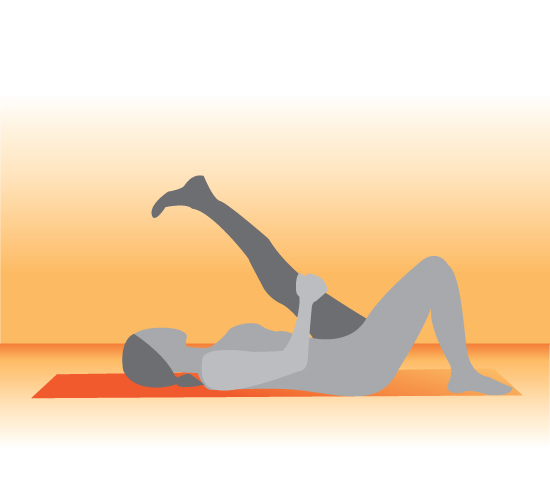 As
we discussed in part one of this series, the majority of those who
suffer from lower back pain do so because of muscular imbalances
that we can correct with some simple exercises.
Last week we discussed the psoas muscle and it’s connection to a
healthy
and balanced low back. This week, it’s all about the
hamstrings.
As
we discussed in part one of this series, the majority of those who
suffer from lower back pain do so because of muscular imbalances
that we can correct with some simple exercises.
Last week we discussed the psoas muscle and it’s connection to a
healthy
and balanced low back. This week, it’s all about the
hamstrings.
The hamstrings are a group of three muscles (biceps femoris, semitendonosus and semimembranosus) that are located on the back of the thigh. Their origin is along the sit bones (ishial tuberosity) and they insert down into the bones of the lower legs (tibia and fibula).
The fact that they are connected to the seated bones is crucial. If these muscles are tight, which most are, they can pull on the seated bones and create a rounded lower spine, which in turn excessively loads the lumbar spine (low back) and can cause muscular tension, or worse, pressure on the discs and surrounding nerves potentially causing disc herniation and/or sciatica. Therefore it is extremely important to keep these muscles long and strong.
Yoga can be very challenging for those with tight hamstrings. There is a lot of forward folding, such as Prasarita Padottonasana and Uttanasana. Bending the knees deeply in forward folds, especially while experiencing back pain, will take the load out of the low back and the stretch can then be directed towards the hamstrings. Yes, you read me right, you can stretch the hamstrings with the knees bent! The hamstrings actually much prefer to be handled gently and with care. We often think we have to yank our heads to our toes in order to find a stretch. We now know this is the wrong idea. A rounded back often means a painful low back. As the hamstrings open up you can begin to straighten the legs millimeter by millimeter. With time and patience, the hamstrings will begin to release.
It often helps to begin releasing the hamstrings while lying in a supine position on the back. This way the spine stays straight with the help of gravity, and the stretch can be isolated to the hamstrings. Try this:
 Your
leg may start further away from your face. You could also use a
strap around the foot or thigh to help support the leg, rather than
hands. As you lengthen the hamstrings, you can extend the bottom
leg long and mindfully pull the foot closer towards your nose. Try
this for 10 breaths on each side.
Your
leg may start further away from your face. You could also use a
strap around the foot or thigh to help support the leg, rather than
hands. As you lengthen the hamstrings, you can extend the bottom
leg long and mindfully pull the foot closer towards your nose. Try
this for 10 breaths on each side.
It should be noted that hamstring injuries are not fun. They are often quite debilitating and take a long time to heal. So working gently and mindfully with this muscle group is strongly encouraged.
Good luck with the hamstrings and let me know about your progress. Next week we will tackle the core!
- Jacci Collins is a yoga instructor, dancer and blogger living in Vancouver, BC. A lifelong student of yoga, she strives to find balance in the body and mind with humor and grace. Join her at www.jaccicollinsyoga.com, facebook, and twitter.


Comments
Existing Comments